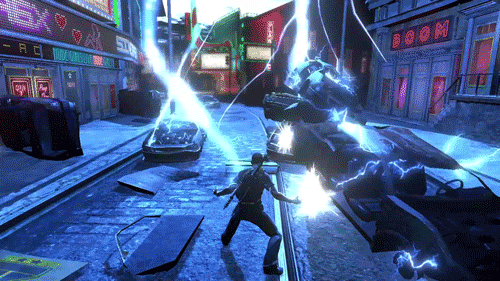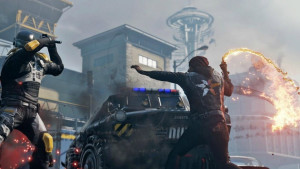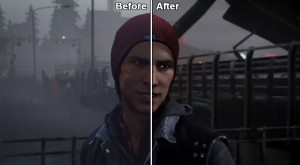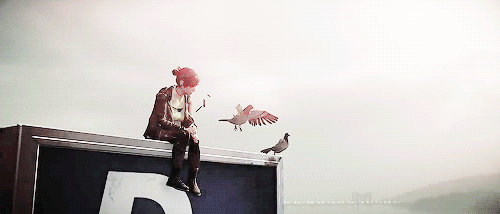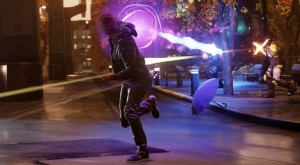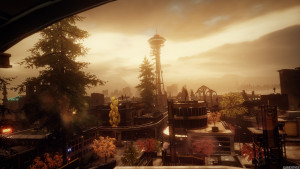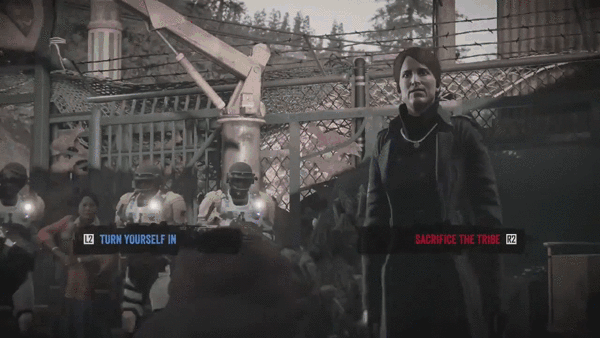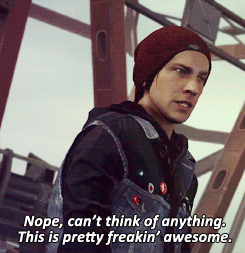Do you remember that day you received your first video game console? How about that time you discovered a secret stage that none of your friends knew about? Being so excited for the latest iteration in a long-running series, only to be disappointed or have your expectations exceeded beyond your wildest dreams. That is what the Video Gamer’s Experience is all about.
It had been six years since the release of Sony’s third iteration of the “Playstation” video game console, the “Playstation 3” (PS3), when the fall season of 2012 rolled into existence. Yet, being the Playstation fan that I was, I still opted to wait before purchasing the system. The simple fact was a majority of the games I believed would be exclusive to the console moved to multiple platforms – including the cheaper, yet highly desirable Microsoft “Xbox 360”. Six years after the system was released in North America and four years after becoming a “360” owner, I finally found a reason to purchase the latest PS3 model – the release of a “slim”, 500 gigabyte version featuring a free game.
But I wasn’t just buying the PS3 for one game. The system did feature several exclusives and HD remakes that intrigued me. More importantly, certain games available on both video game consoles that I owned gained higher reviews and recommendations in favor of Sony’s “Blu-Ray”-playing behemoth. After spending a couple of years investing in my PS3 library, I started picking away at a bucket list of sorts. The “Playstation 4” had already come out and entered my home, but there were still games on the previous generation’s consoles that I wanted to play before calling it a day. One of those series happened to be Sucker Punch studio’s open world, super power-infused “Infamous” games (styled “inFAMOUS”).
I had heard so many great things from friends, associates and colleagues alike about the adventures of accidental superhero Cole McGrath (and don’t forget about his wise-cracking, beer drinking, pot-bellied best friend Zeke) as he trekked through a reimagining of New York and New Orleans respectively; battling fellow powered up baddies and supernatural beings. The comic book style of the first two “Infamous” games (and the vampire-centric add-on/DLC “Festival of Blood”) made the game standout as much as the game play. Having played through both full games and the DLC, I walked away feeling satisfied, but not overwhelmingly “wowed”. Something about the “Infamous” series just didn’t click with me on the same level as it did for other players. When the “Playstation 4” sequel “Infamous Second Son” was announced, I found myself rather apprehensive. I believed in the hype once before and it let me down somewhat. Could “Infamous Second Son” rectify that feeling of slight disappointment and pull me into the digitalized world of Seattle better than its predecessors? There was only one way to find out.
Did I Complete “Infamous Second Son”
As stated above, rather than enter the ravaged locales of places like “Empire City”, the player is given the chance to visit a digitalized, “Big Brother-fied” version of Seattle, Washington where D.U.P. cameras, scanning checkpoints and tapped phones are everywhere. But you don’t enter the city as everyone’s favorite electrified super hero (McGrath). Instead, the player is given control of Delsin Rowe seven years post-“Infamous 2” where individuals like McGrath (“conduits”) are captured and held captive for the protection of regular Joes and Jills. The player quickly discovers during a freak accident outside of Rowe’s home that young Delsin is a conduit and has the ability to absorb certain super powers – his first being the dematerializing “Smoke” ability.
Soon after Delsin’s initial incident and subsequent power gain, the player is given a chance to help Delsin and his law-abiding brother (well, he is a sheriff after all) journey from their Indian reservation home place to Seattle in search of help in curing their family and friends. The youngest Rowe goes on a journey of self-discovery as something he thought he could become – a hero trying to save people like him from suffering, or using his newfound powers to unite his fellow conduits and take it to “the man”.
Doing some research before playing the game, I discovered how reportedly easy it was to achieve a “Platinum” trophy during my playthroughs. Deciding to grab the bull by the horns, my first experience with “Infamous Second Son” was attempting to be a good guy while fighting enemies on the highest difficulty setting, “Expert”. Though challenging and frustrating at times (mostly during one particular boss battle late in the game), the overall difficulty proved to be not that difficult – especially compared to the first two “Infamous” games. After completing the main story and gaining a heroic status, I started anew without the shackles of good intentions holding me down. I could destroy areas and shoot enemies in the face with my neon ray beam without a care in the world until I saw the “evil” ending. Playing through the game twice set the stage for clean up duty (finding all the collectables, clearing the city of D.U.P. forces, and performing local graffiti for Delsin’s own amusement). The end result was a 100% completed game, a platinum trophy, and a nice little message from Delsin himself (as seen below).
Did “Infamous Second Son” Live Up to the Hype?
Being promoted as one of the first must-own “PS4” exclusive games, “Infamous Second Son” entered the consumer world with a ton of publicity and hype. One of the main reasons for the anticipation (beyond being the next game in an established, acclaimed series) was how gorgeous the promotional videos and still shots looked. Thankfully there is little graphical downgrade from the original marketing clips. Seattle looks absolute splendid thanks to a mixture of incredible lighting, bright, neon colors to offset the grunginess of faded paint and concrete, and character models (both in-game and during cut scenes) that make the original games’ art direction appear like something made on the “Playstation 2” during the early days when studios were testing out the system’s capabilities.
Sticking to the subject of a change in direction – “Second Son” moves away from utilizing comic book style story boards to advance the narrative and sticks to the simplicity of full motion cut scenes; making the story easier to get into and grasp. As for the story itself, “Second Son” doesn’t shake up the world, change the view regarding the argument about video games being a new, more expressive medium for storytelling, or crafts something whole fully creative by sacrificing the usual action adventure tropes you’d see in any video game or movie from the same genre. “Infamous Second Son” is a story about a young man trying help his friends and family (in any way, shape or form on whatever scale he can measure), liberate individuals who can’t help themselves, and enjoy buzzing around a city lit up like a Christmas tree.
Yet, no matter how stereotypical the story may appear, it works wonderfully. The early part of “Second Son” allows the player to witness Delsin’s struggle to understand what’s happening to him while becoming acclimated with his powers. Thanks to the mix of upped graphics and some fantastic voice acting by the likes of Troy Baker, Delsin’s story becomes less “been there, seen that” and more emotionally gripping with each passing hour. Sadly, Delsin’s story is all that truly matters even though characters are added to the line up throughout, yet aren’t given anything more than a three minute “get to know them” clip (though this problem is somewhat rectified thanks to a standalone game featuring dope fiend turned crusader Abigail “Fetch” Walker).
But good looks (I’m not just referring to “Fetch”) and a solid story can only mean so much, especially compared to the game play. For better or worse, not much has changed when you compare “Second Son” to its predecessors. Like McGrath, Delsin spends most of his time zipping around Seattle, attaining new powers, fighting enemies and making choices that causes him to walk the straight & narrow or welcome the dark side into his life. What sets “Second Son” apart the most is the powers and abilities themselves. While McGrath was a simple electrified man who could die in water (making a portion of “Infamous 2” frustratingly unbearable), Delsin is a genuine jack-of-all-trades.
Throughout the game, Delsin advances from being just a guy who can shoot smoke out of his hands to gliding around with digitized angels, bowling through people as a concrete slab, and precisely disabling people via my personal favorite power, neon. Melee (which was utterly useless in the first “Infamous” and only necessary during certain moments/enemies during the second game) has even been improved to the point that the majority of the game pre-neon saw me swinging Delsin’s fiery chain to knock out enemies. Each power is upgradeable and can make for a different experience based on how you shape Delsin’s skill tree. Depending on which route you take on the path of good and evil will also shape your tree as you won’t be able to, say, have the ability to laser focus your neon attacks if you decide to kill everyone you come across – giving you another reason to replay the game to see what it would be like to have a particular ability.
“Infamous Second Son” does have hindering flaws. From a technical aspect, the free-form ability to attack from all angles is great, but having the ability to lock onto a target would’ve been a big help. There were times when Delsin would rush toward a nearby enemy while my intention (and fingers) wanted him to attack the person shooting Delsin in the back. The camera can also cause problems in close quarter combat. The parkour that saw McGrath effortlessly move around the cities isn’t as tight and can become rather floaty and inconsistent (causing some falls and even deaths if you’re not careful). And then there’s the city itself not feeling alive or unique given how beautiful it looks. Outside of the Space Needle and faded “Sub Pop” paintings, this could’ve been almost any city in the United States.
But those become minor gripes as you play the game. What is lacking the most is a true sense of morality. In the first two “Infamous” games, McGrath’s actions saw the world change around him. Be a hero and people would flock to help and cheer Cole. On the opposite end of the spectrum, McGrath’s villainous ways caused the city’s residents to flee in terror, pelt Cole with rocks and even run him down with their cars. During certain moments of the game, McGrath would get the opportunity to choose to help or hurt a person or people for his own personal gain (being more of a blank slate ready to do the player’s bidding); thus affecting his morality meter. The latter still exists in “Second Son”, but that’s about it when it comes to morality. Other than the ending and certain powers, there’s no real point as to why Delsin would turn evil. The character depicted throughout the game is a man of honor who just happens to have a childlike mentality at times. It’s hard to believe that absolute power would corrupt Delsin, especially so quickly after leaving his home.
The game’s most obvious shortcoming (other than the lack of genuine difficulty) is its length. Minus the unskippable cut scenes and side missions of collecting things and destroying D.U.P. stations, there’s probably no more than four to six hours of actual storyline-based game play. My second playthrough lasted a whopping day and a half. Completion of the game (including both playthroughs) took me roughly four days (with only one of those days allowing me to play the game for four hours total). No matter how you scratch it, “Infamous Second Son” is criminally short when you compare it to the other games in the series.
Should You Play “Infamous Second Son”?
In a lot of ways, “Infamous Second Son” is the game I’ve been waiting for when talking about this series. “Second Son” looks incredible, moves nicely for the most part, showcases powers that are incredibly fun to play around with, has little to few any frame rate issues, features a story that doesn’t feel insulting (if you’re a good guy) while not going outside of the box, and is absolutely gorgeous (did I already mention that?).
But the lacking difficulty, terribly short experience, repetitive A.I. that is found in all too many games of this genre, side missions that leave a lot to be desired and a morality system that really doesn’t make or break the character as it should causes “Infamous Second Son” to fall short of its intended, lofty position as a potential PS4 system seller. “Second Son” (and the DLC, “Infamous First Light”) is incredibly fun while it lasts, but is ultimately forgettable afterwards. Just like the original two “Infamous” games, don’t expect “Second Son” to be the title that makes you think we’ve reached the pinnacle of open world super hero-based action adventure games; but it sure is one heck of a ride overall.


